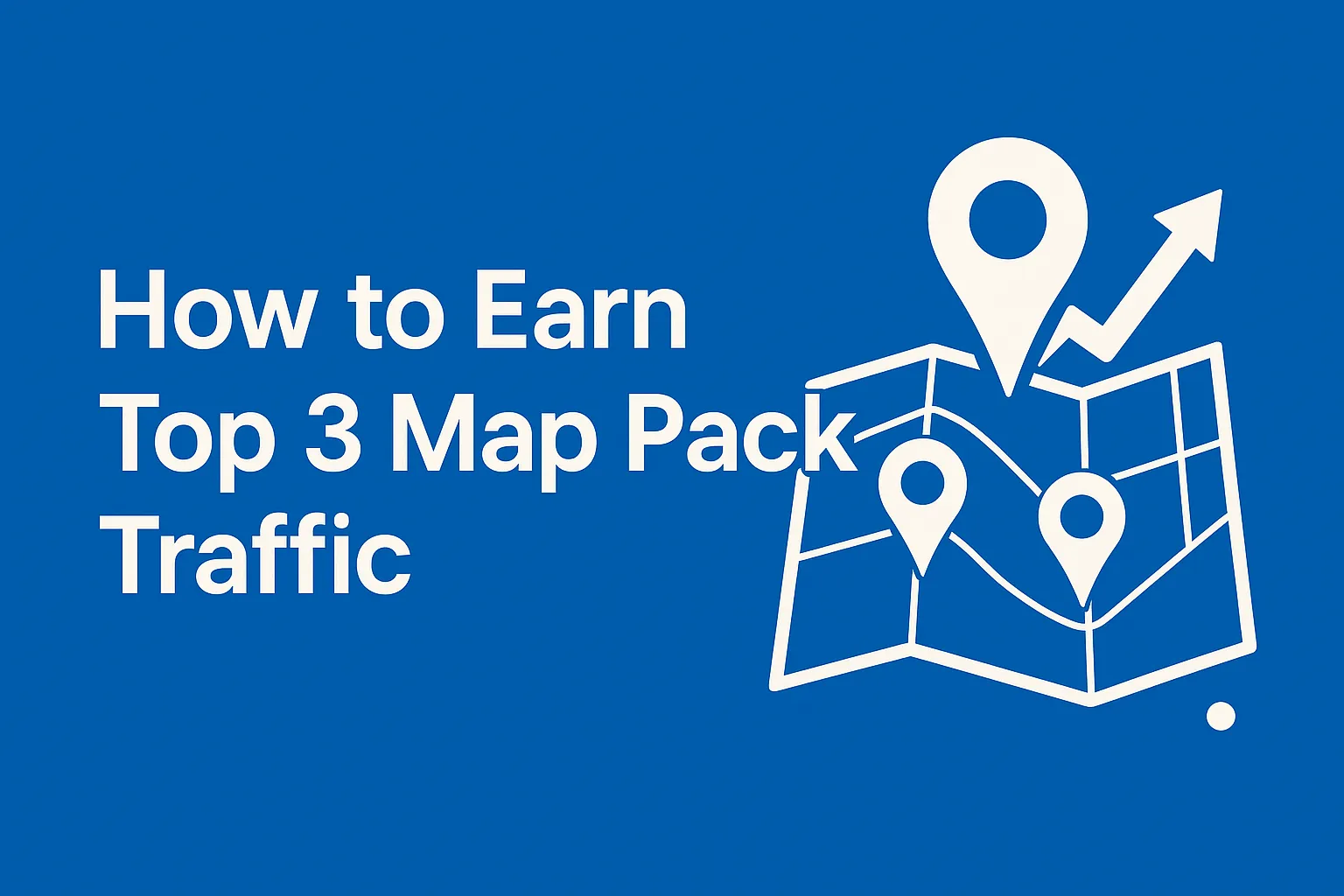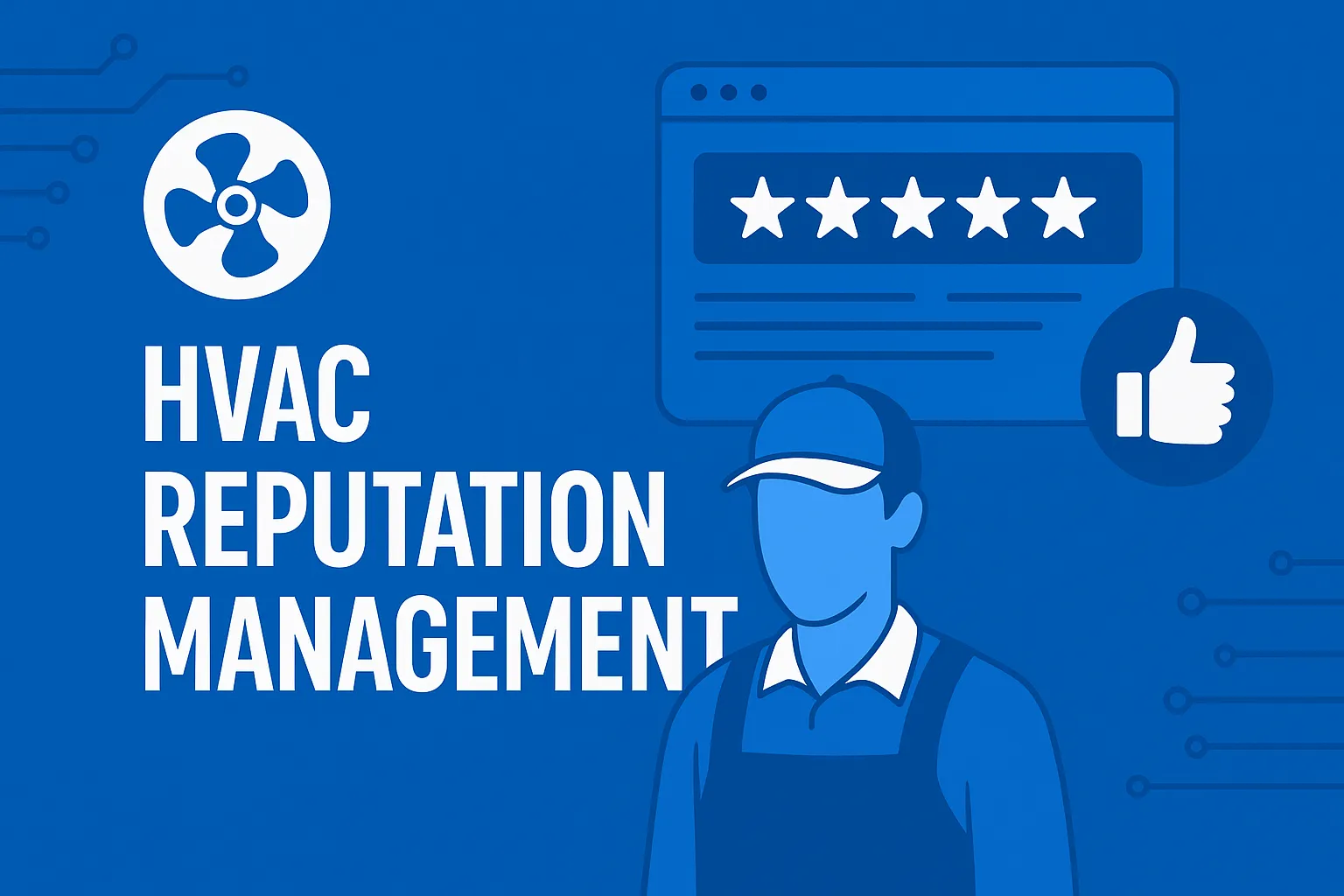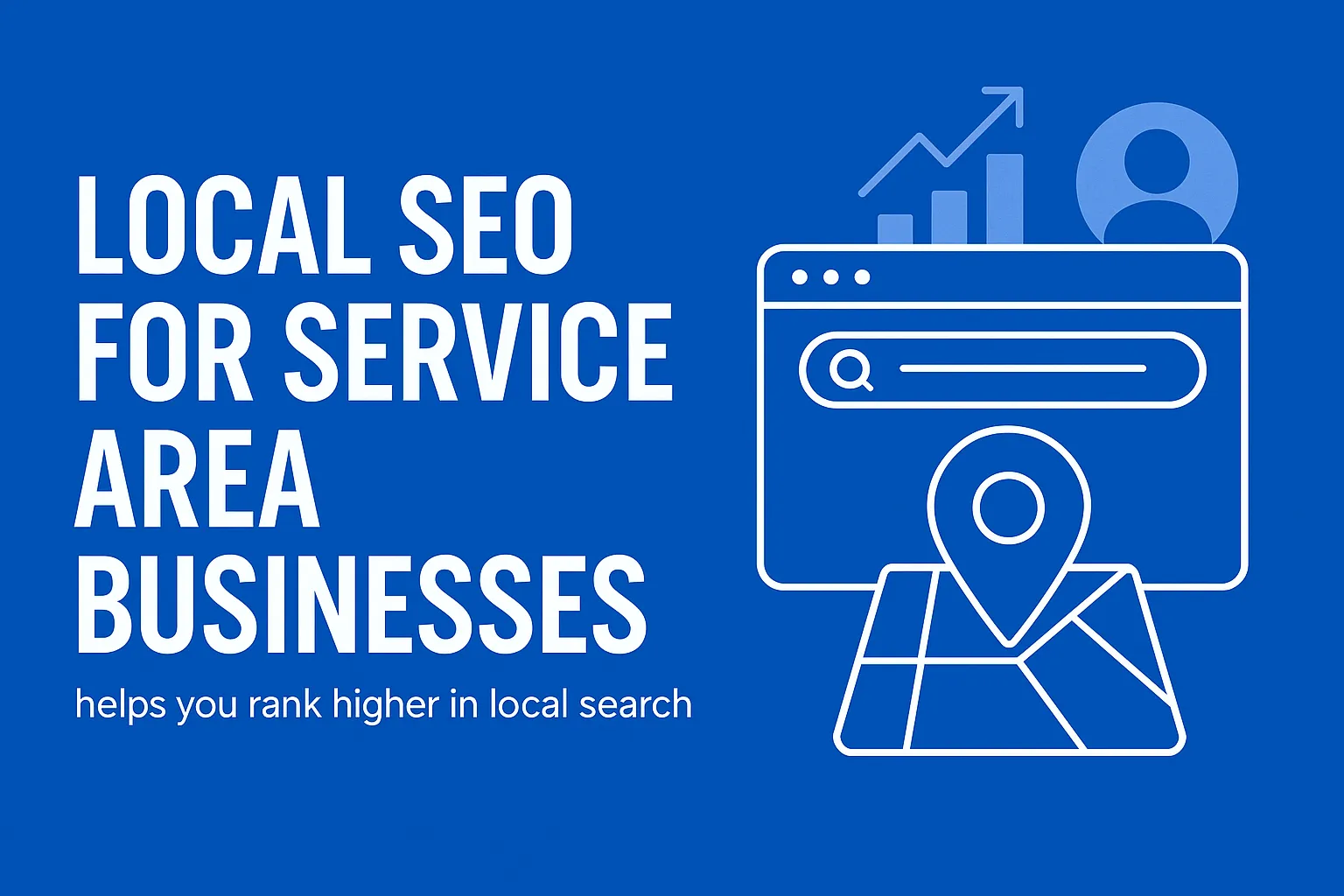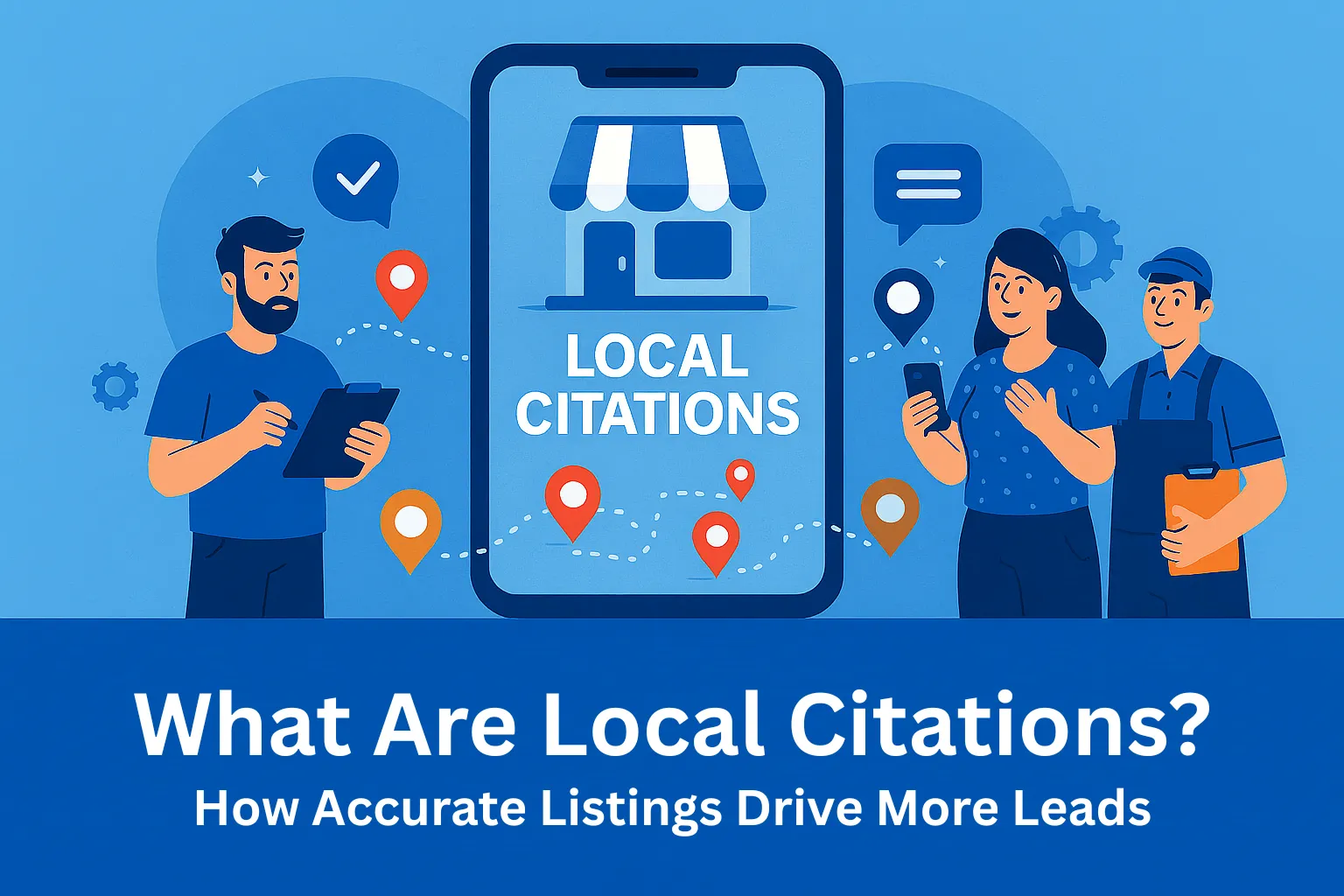Before You Go—Let’s Boost Your Leads!
Join our community of successful HVAC and Plumbing contractors who trust Klutch Growth to enhance their online presence.
Klutch Growth Blog
How to Rank in the Top 3 Map Pack and Boost Local Traffic
When people search for local businesses on Google, that little box showing the top three nearby options is called the Google Map Pack. It’s the first thing searchers see. And if your business isn’t in that top 3 map pack, you’re missing out on a huge slice of local traffic.
Those top three spots drive the most clicks, calls, and directions. Studies show that ranking in the local 3-pack can more than double your visibility and customer engagement compared to regular organic listings. Think about it. When you need an HVAC technician or a plumber, do you scroll down? Or do you tap one of the first three on the map? Exactly.
Getting into the Google 3-Pack takes strategy built on local SEO, accurate listings, quality reviews, and strong location signals.
This guide breaks down how to secure a place in the top 3 map pack, capture more local traffic, and convert searches into customers who walk through your door.

What the Google Map Pack Is and Why It Matters
When someone searches for a local service or business, they see a small map with three pinned listings at the top of the results. That box is called the Google Map Pack. Some call it the Local Pack or the Local 3-Pack.
Google shows it when the search has local intent. For example: “emergency AC repair near me,” “plumber Chicago,” or “roofing contractor Austin.” It appears before the rest of the organic results, which makes it the first thing customers notice.
Here’s why it matters.
- Studies show that businesses in the top three Map Pack positions get far more traffic and actions than those below.
- Research from SOCi found that Map Pack listings earn about 126% more traffic and 93% more user actions like calls, clicks, or direction requests.
- Another study found that these listings capture around 44% of all local-search clicks.
- For service-based companies like HVAC, plumbing, electrical, pest control, flooring, and others, that visibility often means more leads and more revenue.
- When your business isn’t in the Map Pack, most searchers never see it.
In short: the Map Pack sits where customers make decisions. Showing up there means your business gets noticed. Missing from it means you don’t.
How the Google Map Pack works
The Google Map Pack shows a small map and three local listings at the top of Google’s results. Google surfaces it when a query has local intent. Think “HVAC repair near me,” “plumber Chicago,” or “roofing contractor Irvine.” The data comes from Google’s systems and your Google Business Profile.
Google Business Profile connection
Every business that appears in the Map Pack has a Google Business Profile. Google pulls your name, phone, reviews, photos, categories, and hours from that profile. Without a verified profile, you won’t appear on Search and Maps. Verification proves you’re real and lets Google show your info to nearby searchers.
The Three Core Ranking Factors
Google ranks local results by relevance, distance (proximity), and prominence. Those signals decide who shows up and in what order.
- Proximity. Closer businesses tend to appear for “near me” and city queries. If someone in Dallas searches “AC repair near me,” nearby providers have the advantage.
Google Help - Relevance. Your profile must match the query. List the exact services you want to rank for, like “water heater repair” or “drain cleaning.” Clear categories and services improve matches.
Google Help - Prominence. Strong reputation wins. Google looks at review volume and quality, photos, website authority, and brand mentions. A steady flow of genuine reviews and a maintained site help you outrank weaker profiles.
Google Help
Mobile and Voice Search Impact
Most local lookups happen on phones. People act fast after a “near me” search. Many visit a business within a day. Make key details easy to see and tap. Show if you’re open now. Voice queries like “Hey Google, find a plumber near me” are common and urgent. Accurate categories, services, and hours help you win those moments.
Seasonal and Real-time Factors
Demand shifts with weather and timing. Summer drives “AC repair.” Winter lifts “furnace service” and “water heater repair.” Google reflects these spikes by surfacing the services people need right now. Real-time signals matter too. If someone searches late and your profile shows “Open now,” you can leapfrog closed competitors. “Open now” and “near me” queries are common on mobile, so keep hours current.
Core Ranking Factors for the Google Map Pack
After optimizing profiles for dozens of local service companies, we’ve found six elements that have the most impact on Map Pack rankings. These are the signals that separate the businesses in the top three from the ones buried below them.
Proximity and Service Areas
Proximity remains one of the strongest signals in Google’s local algorithm. The closer your business is to the searcher, the higher your chance of appearing in the Map Pack. But you can widen reach through well-defined service areas. Set up service zones that match your real coverage across nearby ZIP codes or suburbs. Combine this with strong reviews, accurate categories, and consistent local keywords on your website. That mix helps you appear beyond your immediate neighborhood when competition is lower or when demand spikes nearby.
Business Categories
Your business categories tell Google what you do. The primary category carries the most weight and should match your main service. Add secondary categories for specific work such as “Drain cleaning service,” “Water heater installation,” or “Air conditioning repair service.” These help you appear for more targeted searches. If your profile only lists a broad category, you risk missing out on customers searching for the exact service you offer.
Reviews (quantity, quality, recency)
Google values fresh, consistent reviews more than old volume. A company with 150 reviews from the past year often outranks one with double that number from years ago. Quality and recency show current relevance. Responding to reviews regardless if positive or negative also helps. It signals that you’re active and engaged with customers, which boosts trust and visibility.
NAP Consistency
Your Name, Address, and Phone number (NAP) must match everywhere online. Even small variations like “St.” vs. “Street” or a second phone number can cause confusion. Inconsistent details weaken Google’s confidence that those listings belong to the same business. Keep NAP uniform across your Google Business Profile, website, and local directories such as Yelp, Angi, and BBB. This consistency reinforces credibility and strengthens local ranking signals.
Profile Engagement
Google tracks how users interact with your profile. Actions like calls, direction requests, clicks, and messages show that people find your business relevant. Listings with higher engagement tend to move up in the Map Pack. Keep your photos updated, post regular updates, and encourage real customer interactions. The more activity Google sees, the more it views your business as the right match for local intent.
Website Local SEO
Your website supports your Map Pack visibility. Build location-based service pages such as “AC Repair in Dallas” or “Drain Cleaning in Phoenix.” Include your city or service area naturally in titles, headers, and content. Add local schema markup to help Google connect your site to your profile details. Fast load time, mobile-friendly design, and clear service info improve both user experience and ranking potential.
Photos and Updates
Google favors businesses that look active. Add fresh photos of recent projects, staff, or service vehicles. Post short updates or offers through your Google Business Profile. Regular updates show that your business is alive and responsive, which builds trust and boosts engagement.
Operating Hours Accuracy
Many local searches include “open now.” Google rewards profiles with correct and current business hours. Keep your schedule updated for weekends and holidays. If someone searches late at night and your profile says “Open,” you have a better chance of appearing ahead of closed competitors.
How to Optimize Your Business for the Top 3 Pack
1. Optimize your Google Business Profile
Your Google Business Profile is the core of your local visibility. Start by setting the right business categories. Choose one main category that defines your primary service, such as “Plumber” or “HVAC Contractor.” Then add secondary categories for specific services you actually provide. Avoid adding anything unrelated. Irrelevant categories weaken your ranking signals.
Add high-quality photos that show real work and real people. Include before-and-after shots of projects, clear images of branded service trucks, and team photos in uniform. Google favors active profiles with at least 10 strong photos. Customers also trust listings that show proof of completed jobs.
Keep business hours accurate year-round. Update them before seasonal changes, holidays, or emergencies. Post short updates through your profile. Share project highlights, seasonal tips, or limited offers. For example, a company in Miami could post about AC tune-ups before summer, while one in Denver might share heating checks before winter. These small updates show Google your business is active and responsive to customers.
2. Collect and Leverage Reviews
Set up a systematic process for requesting reviews from satisfied customers. The best time to ask for a review is immediately after completing a job while the positive experience is fresh. Send a follow-up text or email with a direct link to your Google Business Profile review section.
Respond to every review, positive and negative. For positive reviews, thank customers and mention the specific service they praised. For negative reviews, respond professionally and offer to resolve the issue offline. Google tracks your response rate, and businesses that consistently respond tend to rank higher in the map pack.
Encourage your customers to mention specific services in their reviews. A review saying “Great plumber, fixed our water heater quickly and explained the problem clearly” provides more relevance signals to Google than one with just “Great service, 5 stars.”
3. Build Citations and NAP Consistency
Audit your citations and current business listings across major directories. Your name, address, and phone number must be identical everywhere your business is listed. Mixing up the littlest of details can hurt your rankings.
Focus on these key citation sources for HVAC and plumbing businesses: Yelp, Angi, HomeAdvisor, Better Business Bureau, Yellow Pages, and your local chamber of commerce. Industry-specific directories like contractor association websites also carry weight with Google.
Submit your business to local directories in your service areas. A Dallas plumbing company should get listed on Dallas Chamber of Commerce, local neighborhood association websites, and Dallas-specific business directories.
4. Strengthen Your Website’s Local SEO
Create dedicated service pages for each major service area you cover. Instead of one generic “Miami HVAC Services” page, create separate pages for “Coral Gables AC Repair,” “Kendall heating installation,” and “South Beach HVAC maintenance.” Include specific neighborhood names, landmarks, and local references.
Add local schema markup to your website. This code helps Google understand your business location, services, and contact information. Many website builders now include schema options, or your web developer can add the appropriate code.
Optimize your website for mobile devices. Most local searches happen on phones, and Google prioritizes mobile-friendly websites in both map pack and organic results. Test your site’s mobile performance using Google’s Mobile-Friendly Test tool.
5. Acquire Local Backlinks
Build relationships with local suppliers, manufacturers, and industry partners. Links from local HVAC supply companies, plumbing wholesalers, or equipment manufacturers provide strong local relevance signals to Google.
You could partner with complementary local businesses. Electricians, general contractors, and home inspectors can refer customers to your HVAC and plumbing companies. These partnerships can help you generate natural backlinks and referrals.
6. Improve Engagement Signals
Make it easy for customers to contact you from your Google Business Profile. Include a direct phone number that goes to a person, not an endless phone tree. Add your website URL and ensure it loads quickly on mobile devices.
Use Google Business Profile posts to showcase recent work and seasonal services. Post before/after photos of installations, announce 24/7 emergency availability, or share maintenance tips. Active profiles tend to rank better than profiles that never post updates.
Monitor your Google Business Profile insights to track calls, direction requests, and website clicks.
A local business we helped optimize their profile and citation building saw their lead generation increase by 130% over three months, with map pack calls growing from 3 to 21 monthly.
Common Problems That Keep Businesses Out of the Map Pack
Competitors Consistently Outranking You
Proximity bias affects map pack rankings more than many businesses realize. If competitors have locations closer to the city center or high-search areas, they might consistently outrank you even with fewer reviews. The solution is optimizing your service area settings and creating location-specific content for neighborhoods you serve.
Some competitors might be using spammy tactics like keyword-stuffed business names “Joe’s Emergency 24/7 plumbing drain cleaning water heater repair” or fake categories. While these tactics might work short-term, Google regularly cleans up spammy listings. Focus on legitimate optimization rather than trying to match questionable tactics.
Review the top 3 businesses that consistently outrank you. Analyze their Google Business Profiles, citation profiles, and websites. Often you’ll find specific gaps in your own optimization that explain the ranking difference.
Profile Suspensions and Disabled Listings
Google Business Profile suspensions usually happen for policy violations: incorrect business categories, fake addresses, keyword-stuffed business names, or duplicate listings. If your profile gets suspended, don’t create a new one – this makes the problem worse.
The most common cause we see is businesses using P.O. boxes or virtual offices instead of legitimate business addresses. Service area businesses can hide their address, but it must be a real location where the business operates.
Another frequent issue is multiple profiles for the same business. If you have old profiles from previous business names or locations, consolidate them into one current profile rather than letting duplicates exist.
Algorithm Updates and Bugs
Google’s local search algorithm changes regularly and those shifts can affect map pack rankings. Sometimes a business that’s been stable for months may suddenly drop or climb, not because of anything they did, but because Google adjusted how it weighs proximity, relevance, or other factors.
When you notice sudden ranking changes across multiple locations, it’s often tied to an algorithm update rather than an issue with your own profile. Monitoring your rankings over time can help you spot these patterns..
Sometimes Google experiences bugs that affect map pack results temporarily. Local SEO professionals often discuss these issues in industry forums, so staying connected with the local search community helps identify when problems are widespread versus specific to your business.
Fake Reviews or Review Gating
Google actively removes fake reviews and penalizes businesses that purchase reviews or use review farms. The short-term ranking boost isn’t worth the long-term risk of penalties or profile suspension.
Review gating (only asking satisfied customers for reviews while discouraging dissatisfied customers) violates Google’s policies. Ask all your customers for feedback, not just the ones likely to leave positive reviews.
Incomplete or Inactive Profiles
Many businesses lose visibility simply because their Google Business Profiles aren’t fully optimized. Missing service categories, thin business descriptions, no photos, or outdated hours weaken trust signals. Google prioritizes active listings with complete, recent information. An incomplete profile signals neglect, which lowers ranking potential.
Inconsistent Citations Across the Web
Even if your NAP is correct on Google, mismatched listings in site like Yelp, Angi, Facebook, or BBB can confuse Google’s algorithm. Inconsistent or duplicate citations dilute local authority. Use citation management tools or manually audit your listings to keep all data aligned.
Weak Website Support
Google treats your website as part of the local ranking ecosystem. If your site is slow, missing service pages, or lacks local schema markup, your Map Pack potential drops. A strong website supports your Google Business Profile with credibility, backlinks, and clear local signals.
Low Engagement or Dated Content
Engagement metrics now influence visibility. If few users click, call, or request directions from your profile, Google may lower your ranking. Regular updates photos, posts, Q&A responses to help maintain freshness. A stagnant profile often signals a dormant business
Misaligned Category Targeting
Some businesses choose the right main category but ignore secondary categories that could drive traffic. For instance, a “Roofing Contractor” might skip “Gutter Cleaning Service” or “Roof Repair Service.” That limits relevance for related searches. Fine-tuning these categories often lifts rankings fast.
How to Track Map Pack Rankings and Traffic
Excellent — this section already covers the right points. What it needs is tightening for clarity, SEO, and flow. I’ve rewritten it below to match your established voice: short sentences, natural tone, no fluff, no compound lines, consistent capitalization, and stronger keyword structure around “map pack rankings” and “local SEO tracking.”
1. Google Business Profile Insights
Your Google Business Profile includes built-in data that shows how customers find and interact with your listing. The Insights tab tracks total views, searches, and actions like calls, direction requests, and website clicks.
Watch the How Customers Searched for Your Business section. It shows whether people found you through direct searches (by business name) or discovery searches (by services). Strong discovery search numbers mean strong Map Pack visibility.
Track call volume, direction requests, and website clicks month over month. Increases in these numbers usually align with better Map Pack rankings, especially if your marketing activity stays consistent.
2. Local Rank Tracking Tools
Google Search Console shows which keywords drive traffic to your site, but it doesn’t track Map Pack positions. To see those, use dedicated tools like BrightLocal, Whitespark, or SEMrush.
These tools let you monitor your local rankings by keyword and location. For example, a business in Phoenix can track “AC repair” across multiple ZIP codes in the metro area.
Set up tracking for 10–15 core local keywords and check weekly. Daily monitoring isn’t useful since positions can shift based on proximity and searcher intent.
3. Use UTM Parameters
Add UTM tracking codes to your Google Business Profile website link. This separates Map Pack traffic from other organic sources inside Google Analytics.
Use parameters like:
- source = google
- medium = organic
- campaign = gmb
Check how that traffic performs. If it converts well into calls or leads, it confirms that your Map Pack presence drives real business results.
4. Monitor Conversions
Set up call tracking numbers specifically for your Google Business Profile. This shows exactly how many calls come from your listing versus your website or ads.
Track the quality of those leads too. Customers who find you through Map Pack results often have stronger purchase intent and convert at higher rates.
In Google Analytics, monitor form submissions, call clicks, and other conversions linked to your profile traffic. This data helps you see what drives leads and where to focus future optimization.
Advanced Strategies to Stay Ahead in the Local Pack
Multi-location Profile Strategy
If your business serves multiple areas, create separate Google Business Profile (GBP) listings for each location or territory. For example, one profile for Dallas and another for Fort Worth. This helps you target each market with accurate service-area settings and local signals. Studies show tailored location pages and listings help multi-location brands rank better.
Local Content Marketing
Create helpful content tied to local topics: seasonal service checklists, regional code changes, case studies from projects in recognizable neighborhoods. For instance: “Preparing Your HVAC System for Houston Summers” or “What San Diego Homeowners Should Know About Drain Cleaning.” Content like this builds local relevance and supports your GBP.
Paid + Organic Integration
Use paid ads to test high-competition keywords while you optimize for the Map Pack on related terms. If you run an ad for “24/7 plumber Denver,” the data can show you which keywords convert best. Then focus your organic efforts on those specific terms. This dual approach sharpens your overall local strategy.
AI-Driven Search Adaptation
Search result formats are changing. Features like Google Search Generative Experience (SGE) and other AI overlays may display before or alongside the Map Pack. Businesses with comprehensive, up-to-date GBP listings and content are better positioned for these new formats. This is especially relevant for future-proofing your local visibility.
Additional Advanced Strategies
Here are a few more tactics worth considering:
- Neighborhood-Level Targeting. Instead of only targeting city names, go hyper-local (e.g., “Drain Cleaning in Lincoln Park Chicago”). These micro-targets help in competitive markets.
- Local Backlink / Partnership Building. Develop genuine collaborations with nearby businesses, local events, or niche industry sites to build local authority. Local links help strengthen your relevance signal.
- Technical Local SEO & Schema Markup. Use structured data (LocalBusiness schema) and ensure your site is mobile-friendly and fast. These tech factors increasingly influence local visibility.
Frequently Asked Questions (FAQs)
How long does it take to rank in the Local Pack?
Results vary. Some businesses see movement in 2-4 weeks after basic optimization. Larger gains and consistent top-3 placement generally take 3-6 months, sometimes longer in competitive markets.
Can service-area businesses appear without a visible address?
Yes. You can hide your address in your profile and still rank, as long as you verify a real business address and correctly set your service area.
What’s the best way to post updates on my Google Business Profile?
Post once or twice each week. Focus on photos of recent work, seasonal services, or helpful tips. Keep it service-oriented, not purely promotional. Use natural keywords.
Can a business based in a co-working space rank in the Map Pack?
Yes. Provide your actual suite or unit number and ensure your business legitimately operates from that location. Google requires a verifiable physical address for eligibility.
How do “near me” searches affect businesses in HVAC, plumbing and other services?
“Near me” searches are high-intent and often urgent. For HVAC and plumbing, these queries spike during extreme weather or emergencies. Service businesses benefit most when they show up in these moments.
Final Thoughts: Turning Top 3 Map Pack Traffic into Booked Jobs
Ranking in the top 3 map pack is only the first step. The goal is not visibility alone but turning that traffic into calls, booked jobs, and paying customers.
Leads from the top 3 map pack are already qualified. They searched for your service, saw your reviews, and chose your business because it looks trustworthy and close by. Don’t lose these high-intent leads with slow response times or missed calls. Quick action converts them into real customers.
Your Google Business Profile and local citations build the foundation that drives top 3 map pack traffic. To stay visible, update your profile often, earn new reviews, and keep your website optimized. Small updates keep your ranking strong and your phone active.
Most local business owners don’t have time to manage every SEO detail. The ones dominating local results work with specialists who understand Google Business Profile optimization and local SEO.
If you’re ready to capture more top 3 map pack traffic and turn local searches into booked jobs, we can help. At Klutch Growth, we focus on optimizing Google Business Profiles and building local citations that increase visibility and leads.
Recent Posts
November 14, 2025
November 10, 2025
November 3, 2025
October 27, 2025




